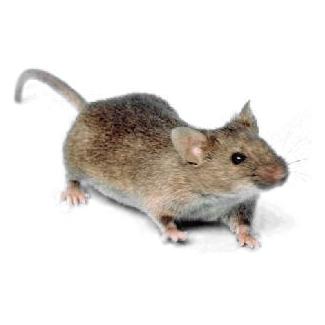Mouse removal
Incontinent and prolific, mice are pests that love to set up home in warm, dry houses. Often the first sign of a rodent infestation will be their droppings. What you don’t see is their urine which smears on every surface they touch.
How to find a Mouse nest
You have seen evidence of mice in your house, you may even have seen a mouse scurrying away out of the corner of your eye - but how do you find its home? Unfortunately, mice don’t make nice semicircular holes in skirting boards like they do in the cartoons. Mice generally look for somewhere which is quiet and rarely disturbed. One of the first places to look is underneath your stair cupboard. Another popular place is underneath kitchen kick boards. This is a favourite for mice as it is quiet, but also has the advantage for the mouse of lots of little bits of food being kicked under it.
If you can’t see the actual nest, you may see what look like little grains of black rice. These are mouse droppings and they are a clear sign that you have a problem. One mouse produces up to eighty droppings a day.
How to get rid of a mouse problem
The first question you need to ask yourself is how did they get in? Look around the outside of the property. There may be a damaged air brick that will either need replacing, or you'll need to put some fine mesh wire over it. If there's a gap underneath the doors install a bristle strip draft excluder.
These things will help stop the mice getting in but not completely, because modern houses are built with breeze blocks and stud partition walls which allow mice to travel through these areas quite easily, even from neighbouring properties.
If the problem continues, you can resort to old fashioned mouse traps baited with either chocolate or some peanut butter. Placed them sideways onto the wall as the mice will then run straight across them – lengthways means the mice will have to approach from the right end.
If the problem persists, it’s time to try poisoning. We don’t recommend that you try setting poison yourself, due to the risk of contamination and unintentional poisoning. You also need to use precisely the right amount or you will end up simply giving the rodents a free meal and helping them to become resistant to the poison.
Trapping and baiting are Cleankill’s rodent control services' preferred methods for mouse and rodent infestation control. We can set the traps and arrange inspection and collection to suit you. Our professional rodent control services know where to look and how to ensure that traps and bait are safe from inquisitive children and pets.
Contact us today for more information and advice about mouse control & rodent removal services >
Fun facts about mice
- Mice have tails that are as long as their bodies and their tails have scales that help with climbing
- A mouse can jump down 12 feet without hurting itself
- Mice travel along the same route repeatedly leaving a smear mark - a build-up of dirt and oil from their fur along walls, pipes and holes
- House mice can run up almost any vertical surface including wood, brick, sheet metal, cables and pipes
- House mice can become pregnant within 48 hours of producing a litter
- A mouse produces between 40 to 100 droppings per day
- A female house mouse can give birth to up to a dozen babies after a 3-week pregnancy, and then come straight back on heat again. In a year, you've got potentially thousands of them
- Many mice will gather food and then store it for later use
- If you’ve seen one mouse, there will be more of them out of sight
- Mouse phobia is referred to as musophobia. Walt Disney, creator of Mickey Mouse is reported to have been musophobic!
